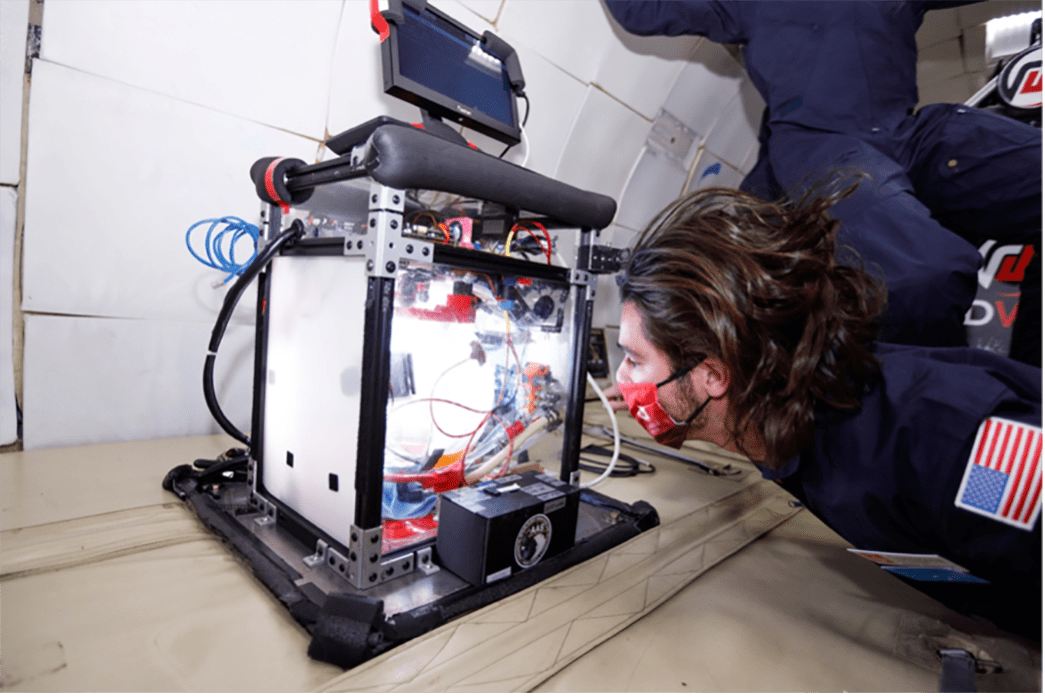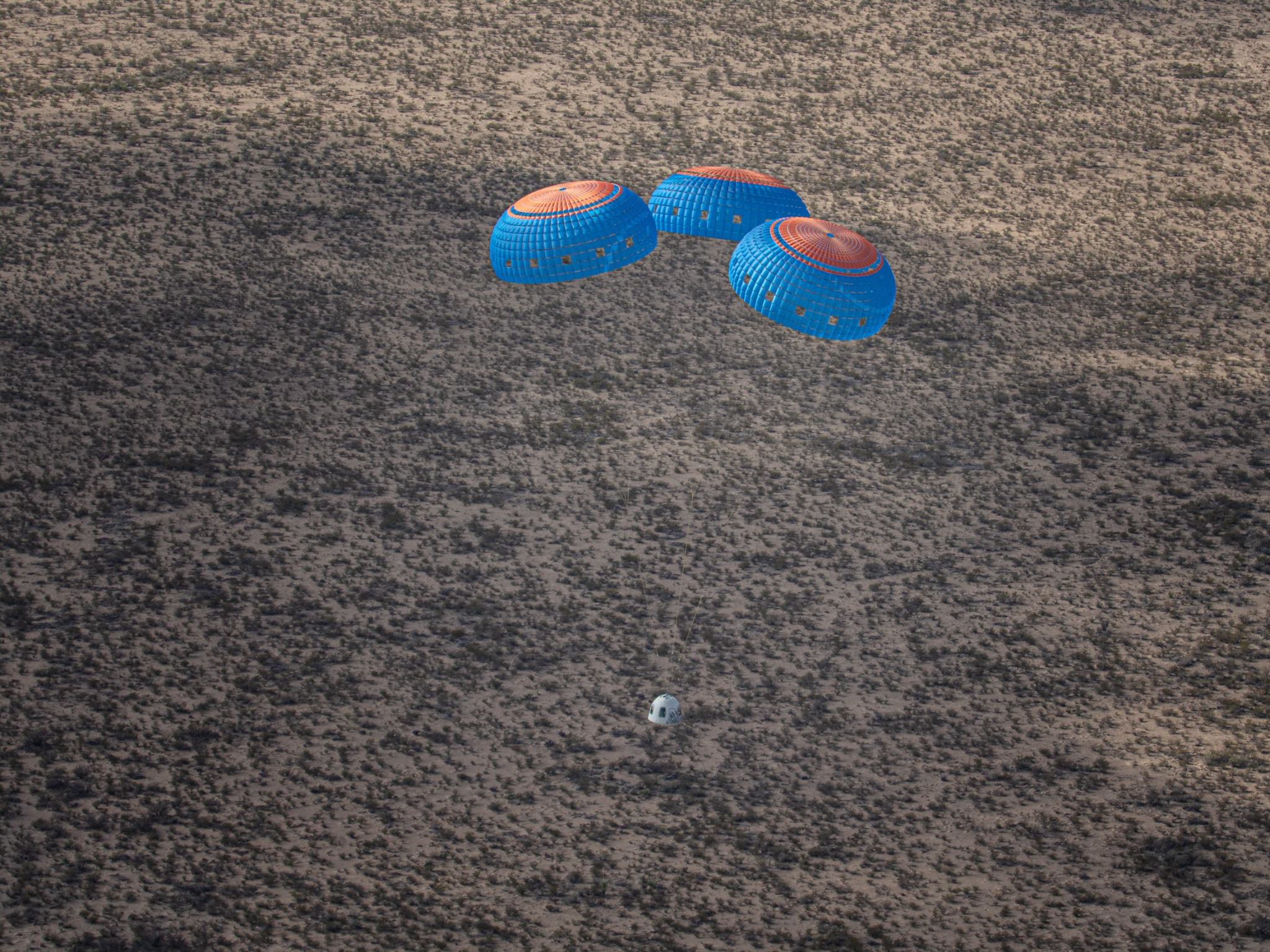
NASA has selected nine space technologies under the agency’s 2021 TechFlights solicitation for testing aboard parabolic aircraft, high-altitude balloons, and suborbital rocket-powered systems.
This $5.5 million investment in technology demonstration activities will support the advancement of a wide range of technologies that address mission needs for both NASA and the commercial space industry. By exposing these innovations to many of the rigors and characteristics of spaceflight – without the expense of an orbital flight – NASA can more rapidly help ensure these technologies work correctly when they are deployed on future missions. The technologies were selected under the Flight Opportunities program within NASA’s Space Technology Mission Directorate (STMD), which develops transformative space technologies to enable future missions.
“By supporting suborbital flight testing, our Flight Opportunities program aims to help ensure that these innovations are well-positioned to address NASA’s space exploration and scientific discovery goals, while also supporting commercial space infrastructure,” said Walt Engelund, deputy associate administrator for programs in STMD at NASA Headquarters in Washington.
As part of the latest cohort of TechFlights selections, the organizations developing the selected technologies will receive a grant or collaborative agreement allowing them to purchase flights from a U.S. commercial flight vendor that best meets their needs – a process that can help decrease the time needed for bringing innovations from lab-based testing to flight test. This year’s solicitation again included an option for researchers to propose accompanying their payloads on suborbital space flights enabling them to tend to experiments in real time rather than relying on an automated experiment setup. As with all selections, researchers with human-tended payloads will need to ensure that they meet NASA’s requirements laid out in the solicitation prior to funds being awarded.
“Each year, the group of technologies proposed for the TechFlights solicitations is more impressive, and this year’s selections address some of NASA’s critical technology gaps. In addition, we are pleased to see new researchers and organizations participating in TechFlights,” said John Kelly, program manager for Flight Opportunities at NASA Armstrong Flight Research Center.
The solicitation included three topic areas, which reflect NASA STMD’s current priorities. These focus areas guided the agency’s selection of technologies that could further the agency’s space exploration and scientific discovery goals as well as utilization of commercial suborbital flight and low-Earth orbit platforms for research applications. These focus areas are: Supporting National Efforts at the Moon and in Cislunar Space, Inclusive of Human and Robotic Exploration and Scientific Discovery; Earth-Observing Capabilities to Support Breakthrough Science and National Efforts to Address Climate Change; Technologies that Ensure National Leadership in Space and Help the Commercial Space Industry Grow.
The selected technologies include:
Astrobotic Technology Inc. in Pittsburgh, Pennsylvania
A LiDAR-based hazard detection system will be tested, allowing researchers to evaluate the sensor’s performance in an operational environment. The technology is planned to fly on Masten Space Systems’ Xodiac vertical takeoff vertical landing system.
Blue Origin in Kent, Washington
Small, low-cost, ultra-wideband sensors will be tested as an alternative to conventional rendezvous and docking technologies that are often expensive and bulky. This technology is planned to fly on Blue Origin’s New Shepard rocket-powered system.
Carthage College in Kenosha, Wisconsin
Piezoelectric sensors will be tested for their ability to accurately identify the location and distribution of the liquid surface during propellant transfer in microgravity, a capability that is necessary for engine restart of spacecraft and for propellant transfer between in-space fuel depots and visiting spacecraft. This technology is planned to fly on both Zero Gravity Corporation’s (ZERO-G) G-Force One parabolic aircraft and Blue Origin’s New Shepard.
Center for Applied Space Technology Inc. in Orange Park, Florida
A new process and system for printing cells and bioink mixtures will be evaluated for applications in large-scale production of living cells and basic 3D cellular structures. The technology is planned to fly on ZERO-G’s G-Force One.
Ecoatoms, Inc. in Atherton, California
A new process for developing biosensor coatings will be tested, leveraging microgravity to manufacture smoother and more sensitive biosensors than can be produced on Earth. The technology is planned to fly on Blue Origin’s New Shepard.
Honeybee Robotics in Pasadena, California
A system for testing viscous bubble behavior in lunar gravity conditions will be examined to increase researchers’ understanding of molten regolith electrolysis techniques that could be used to extract oxygen from lunar soil. The technology is planned to fly on Blue Origin’s New Shepard.
Purdue University in West Lafayette, Indiana
A technique for modeling the behaviors of less toxic, “green” propellant will be tested to gather data on potential solutions for non-traditional propellant management. This technology, and the researcher who will tend this suborbital space flight test, are planned to fly on Virgin Galactic’s SpaceShipTwo system.
San Diego State University in San Diego, California
A phased array antenna transceiver will be assessed, with the aim of developing an antenna suitable for reliable lunar communication that is more efficient than currently available technologies. This technology is planned to fly on Raven Aerostar’s high-altitude balloon.
University of Florida in Gainesville
A method for minimizing propellant boiloff using surface roughness applied as a thin-film coating to a cryogenic tank will be tested in support of saving gas. The technology is planned to fly on ZERO-G’s G-Force One.
About Flight Opportunities
Flight Opportunities rapidly demonstrates promising technologies for space exploration, discovery, and the expansion of space commerce through suborbital testing with industry flight providers. The program is funded by STMD at the agency’s Headquarters in Washington, D.C. and managed at NASA’s Armstrong Flight Research Center in Edwards, California. NASA’s Ames Research Center in California’s Silicon Valley manages the solicitation and evaluation of technologies to be tested on commercial flight vehicles.
































